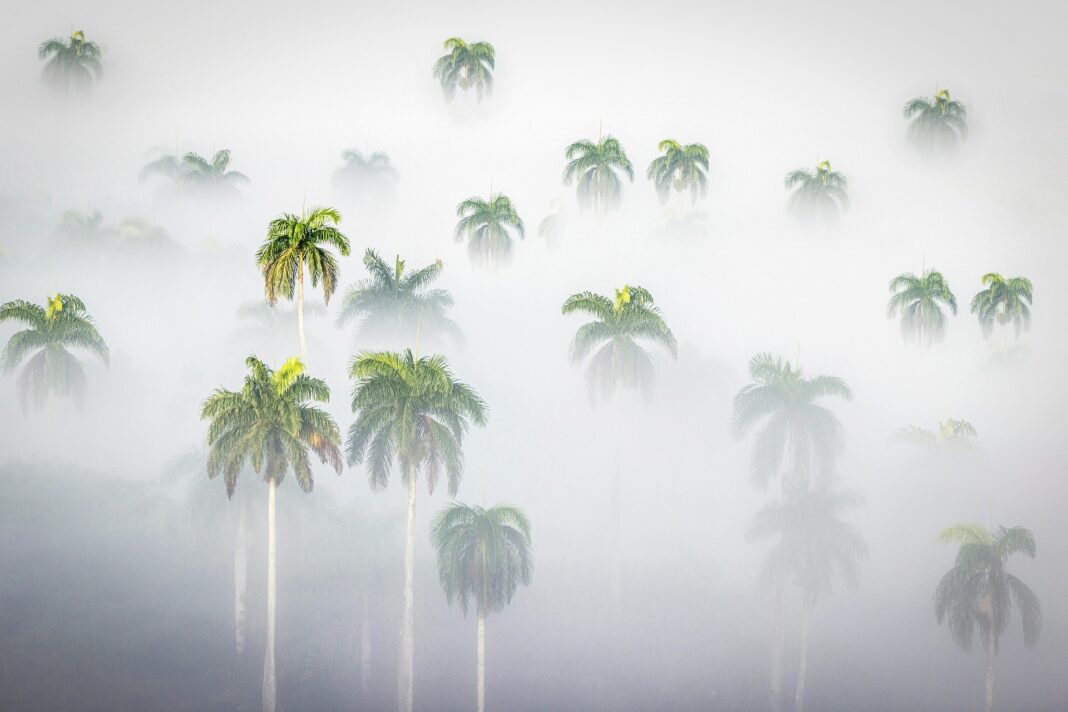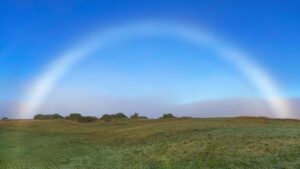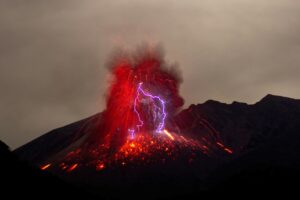
As Calgarians, we all know weather, temperature, and climate in its extremes. From -40 degrees with windchill, where Celsius and Farenheit converge, to summer heat waves cresting up to the mid 30s, Calgary has had its fair share of extreme temperatures and a varied climate. Our unique geography also treats us to chinooks, where a change of 20 degrees or more in a single day isn’t unheard of. But today, I wanted to look at some other unique and, to us, foreign weather phenomena! The Earth is a vast and beautiful place, one worth protecting, in all her wonderous and mysterious ways.
1. The Fogbow
The fogbow, or white rainbow, looks almost like a monochrome rainbow. It’s created similarly to the rainbow, where sunlight interacts with water droplets to form a visible arch. Some physical processes that fogbows go through, including diffraction, are what gives it a vague, colourless look that is distinct from the rainbow.

2. Snow Rollers
Snow rollers are the natural formation of snowballs, formed when wind and gravity push and pull snow down an inclined surface. Unlike snowballs, they are usually hollow on the inside and made with rolled-up layers of snow, like a cinnamon bun. They are often found at the bottom of hills, and can be anywhere from the size of your palm to bigger than a car. Snow rollers only occur in very specific conditions, including needing wet, loose snow, so they are very rare.
3. Waterspouts
Waterspouts are almost like water-tornadoes. They are cylindrical, rotating columns of air over a body of water, known to have picked up sea creatures and rained them down on land in the past. They most commonly occur in tropical and sub-tropical areas, but are not limited to them. Records of waterspouts date back to as far as the 15th century.
4. Volcanic Lightning
Volcanic lightning occurs similarly to regulary lightning, only it’s due to the collision of volcanic ash. Volcanic lightning occurs in explosions that release large amounts of ash and not those that mostly release lava. This has occured all throughout the world and recorded human history.

4. Blood Rain
Blood rain has spooked people for centuries. It is a phenomenon that can last anywhere from minutes to days, and was often considered a bad omen. However, despite its name, it is not actually made of blood raining down on the Earth. Instead, blood rain occurs when red dust or tiny red particles in the air mix with precipitation, creating the image of blood-like water.
